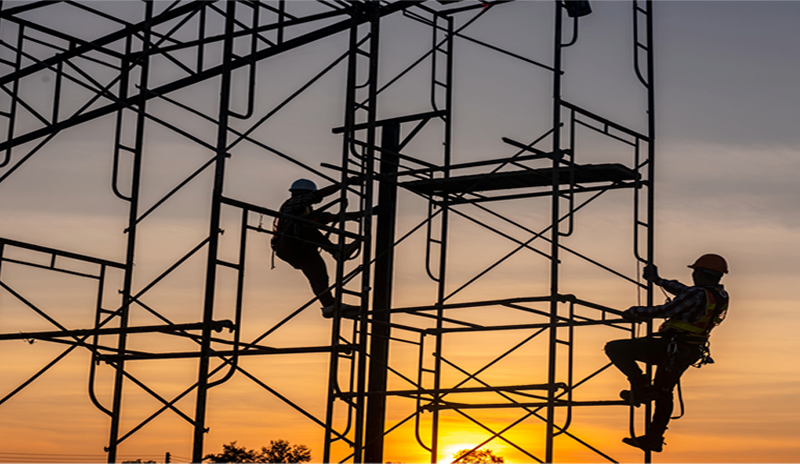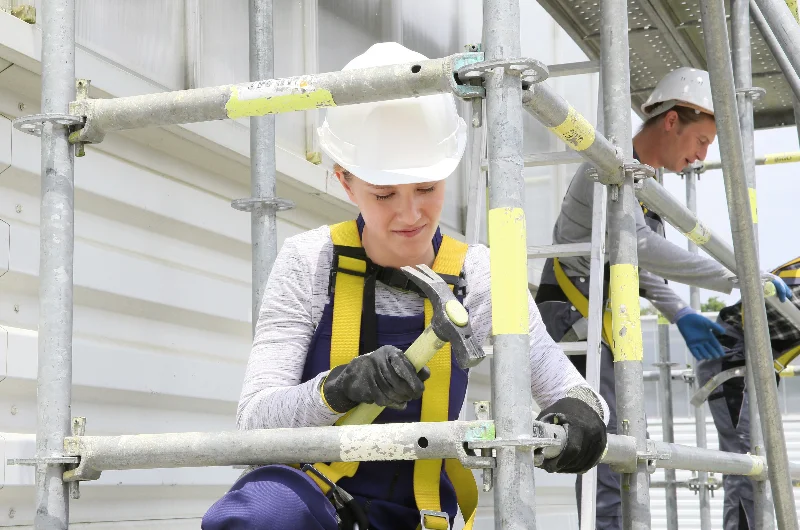
Unlocking the Secrets of Scaffold Safety
Scaffolds are a familiar sight in the construction industry, serving as elevated work platforms. However, ensuring the safety of workers on scaffolds is paramount, and OSHA has established stringent fall protection regulations to prevent accidents and injuries. In this comprehensive guide, we will delve deep into the world of scaffold safety, covering vertical and horizontal standards, fall protection height regulations, compliance methods, and specific considerations for various scaffold types.
Understanding Vertical and Horizontal Standards
Before we delve into the specifics of scaffold safety, it’s crucial to comprehend OSHA’s classification of standards into vertical and horizontal categories.
Horizontal Standards: These broad regulations, exemplified by 29 CFR 1926 Subpart M: Fall Protection, lay the foundation for fall protection across diverse industries. They provide the fundamental principles applicable in various scenarios.
Vertical Standards: In contrast, vertical standards, such as 29 CFR 1926 Subpart L: Scaffolding, are tailored to specific industries, applications, conditions, or practices. When vertical standards address the same issues as horizontal standards, they take precedence.
Navigating Fall Protection Height Regulations for Scaffolds
An essential aspect of scaffold safety revolves around fall protection height regulations. In simple terms, rules established in vertical standards, like Subpart L – Scaffolds, supersede those in horizontal standards, such as Subpart M – Fall Protection.
For instance, Subpart M mandates fall protection at a height of 6 feet in construction (29 CFR 1926.501(b)(1)). However, Subpart L, which pertains to scaffolding, raises this requirement to 10 feet (29 CFR 1926.451(g)(1)). When working on scaffolds, the correct fall protection height is 10 feet because the vertical standard prevails over the horizontal standard.
The rationale behind this adjustment is the typical height of scaffold sections, often exceeding 6 feet. This modification aims to accommodate masons and other trades frequently using scaffolds, as the initial 6-foot requirement was considered burdensome.
Achieving Fall Protection Compliance on Scaffolds

Once the height exceeds ten feet, ensuring compliance with fall protection regulations becomes paramount. There are primarily two solutions for mitigating fall hazards: employing roof guardrails or tethering to an anchor point. Many companies opt for safety railings due to their ease of installation and passive protection.
However, it’s essential to ensure the correct installation of safety railings. Scaffold regulations are intricate, and OSHA mandates that they be erected under the supervision of a Competent Person – someone with the knowledge to identify hazards and the authority to rectify them.
While certain scaffold types come equipped with integrated safety rails, others, such as masonry scaffolding, often lack proper railings. This deficiency can lead to fall hazards, particularly at the scaffold ends and where cross-braces intersect.
Masonry Scaffolding: A Special Focus
Masonry scaffolding stands apart from other scaffold types due to its composition of uprights, outriggers, cross-braces, and base plates. However, it often lacks elements like mudsills, planks, or railings, placing the responsibility on the erecting company to provide these components. Rails in masonry scaffolding are typically constructed from 2x4s wired to the uprights, but these are frequently installed incorrectly, compromising safety.
A common oversight in masonry scaffolding is leaving the scaffold ends exposed and unprotected. While care is taken to safeguard the scaffold’s length behind workers, the width, from the front to the back on each end, often remains susceptible to fall hazards.
Special Considerations for Window Washer Scaffolding
In the case of window washer scaffolding, the enclosed design with railings might suggest adequate fall protection. However, this assumption is not entirely accurate. For suspended scaffolding used in window washing, workers must remain tied off at all times. In the scenario of one or two-point suspension scaffolding, this entails securing to an anchor point or an autonomous fall protection system. In the case of a four-point suspension scaffold, tethering to the scaffold itself is an option, provided an approved anchor point is included. Nevertheless, an independent tie-off is often recommended for enhanced safety.
Moreover, in four-point suspended scaffolding, using the scaffold itself as an anchor point is permissible only if approved by the manufacturer. This consideration is pivotal, as the forces generated during a fall could lead to scaffold collapse.
Going Beyond the Basics
These insights offer a fundamental understanding of fall protection on scaffolds. Beyond these essentials, OSHA regulations encompass provisions for horizontal lifelines in suspended scaffolds, specifications for attaching vertical lifelines, and requirements for the strength of railings. Proper plank installation, accounting for plank length, suitable overlap, and verifying plank capacity to support four times the intended load, constitutes another vital facet of scaffold safety.
Scaffolding consistently features among OSHA’s top ten most frequently cited violations, underscoring the intricacy of these requirements. Consequently, having a Competent Person who is adequately trained and experienced with the specific scaffold types employed in your operations is indispensable. This not only fulfills regulatory requirements but also mitigates the potentially severe consequences of non-compliance.
In conclusion, safeguarding the well-being of scaffold workers through proper fall protection measures is of paramount importance. A comprehensive understanding of standards, height regulations, and compliance methods is a vital step toward fostering a secure work environment within the construction industry.
FrenchCreek: Your Safety Partner for Scaffold Fall Protection! Explore our extensive range of products, including shock-absorbing lanyards with scaffold hooks designed for easy attachment to standard scaffolding rails.
Have questions about scaffolding safety? Contact our dedicated customer support team. Your safety is our priority.